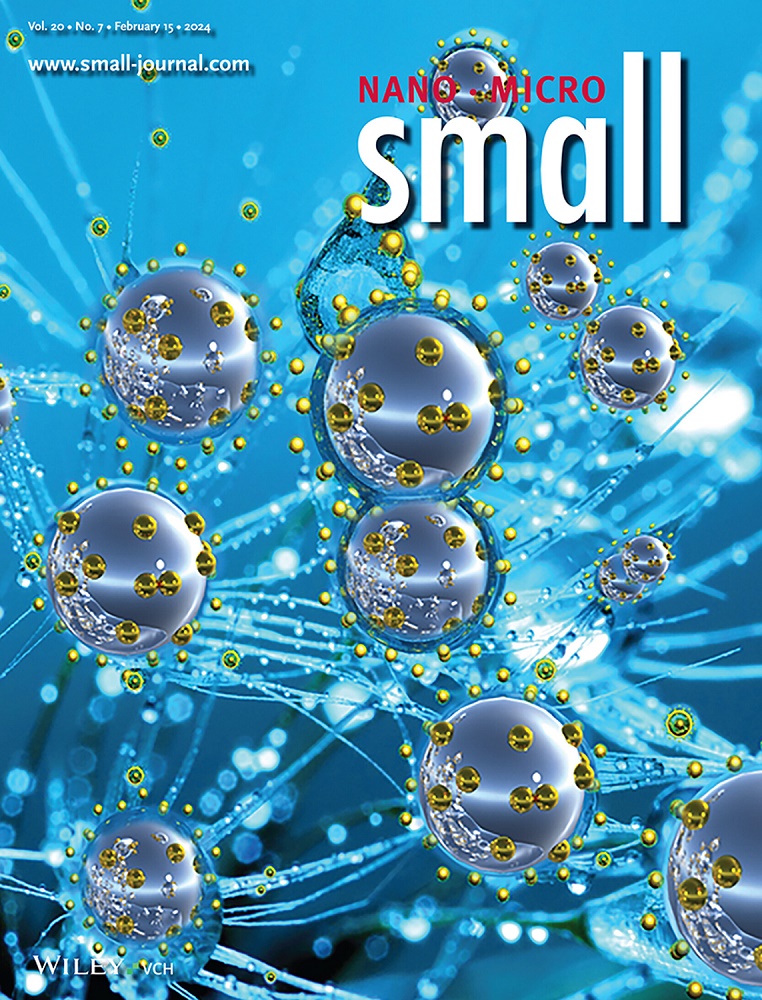Delivery System of Nanozymes Loaded with DNAzymes and Hypoxia‐Activated Prodrug for Anti‐Tumor Metastasis
IF 13
2区 材料科学
Q1 CHEMISTRY, MULTIDISCIPLINARY
引用次数: 0
Abstract
Breast cancer is a common malignant tumor in women worldwide, and its high metastasis is the main reason for high mortality. Especially under hypoxic microenvironments, the upregulation of hypoxia‐inducible factor 1‐alpha (HIF‐1α) can activate the transcription factor Twist and promote tumor metastasis through epithelial‐mesenchymal transformation (EMT). Here, MnO载DNAzymes纳米酶和缺氧激活前药抗肿瘤转移的递送系统
乳腺癌是世界范围内女性常见的恶性肿瘤,其高转移性是导致高死亡率的主要原因。特别是在低氧微环境下,缺氧诱导因子1α (HIF - 1α)的上调可激活转录因子Twist,通过上皮间充质转化(epithelial - mesenchymal transformation, EMT)促进肿瘤转移。本研究以岩藻聚糖为保护剂,合成了具有氧化酶样活性的二氧化锰纳米片,并通过负载DNAzymes和缺氧激活的前药替拉帕胺(TPZ)构建了一个多功能递送系统MnO2@DNAzyme‐TPZ (MDT),用于肿瘤治疗和转移抑制。MDT通过MnO2纳米酶将O2转化为活性氧(ROS)来杀死肿瘤,并通过DNAzymes选择性沉默肿瘤转移相关的Twist基因来抑制肿瘤转移。TPZ增强缺氧环境下的肿瘤杀伤能力,并通过降低HIF‐1α的表达协同抑制肿瘤转移。在原位肿瘤模型中,MDT显著抑制肿瘤生长和转移。基于DNAzymes的选择性基因沉默与纳米酶和缺氧激活前药相结合的策略为抗肿瘤转移治疗提供了新的途径。
本文章由计算机程序翻译,如有差异,请以英文原文为准。
求助全文
约1分钟内获得全文
求助全文
来源期刊

Small
工程技术-材料科学:综合
CiteScore
17.70
自引率
3.80%
发文量
1830
审稿时长
2.1 months
期刊介绍:
Small serves as an exceptional platform for both experimental and theoretical studies in fundamental and applied interdisciplinary research at the nano- and microscale. The journal offers a compelling mix of peer-reviewed Research Articles, Reviews, Perspectives, and Comments.
With a remarkable 2022 Journal Impact Factor of 13.3 (Journal Citation Reports from Clarivate Analytics, 2023), Small remains among the top multidisciplinary journals, covering a wide range of topics at the interface of materials science, chemistry, physics, engineering, medicine, and biology.
Small's readership includes biochemists, biologists, biomedical scientists, chemists, engineers, information technologists, materials scientists, physicists, and theoreticians alike.
 求助内容:
求助内容: 应助结果提醒方式:
应助结果提醒方式:


